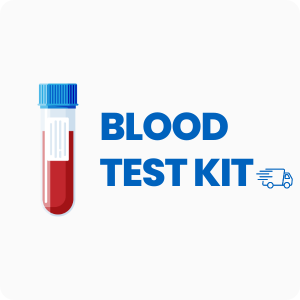Ordering the Organic Acids Test by Vibrant Wellness
The Organic Acids Test by Vibrant Wellness helps identify imbalances in metabolism, gut bacteria, and nutrient absorption by measuring organic compounds in urine. This test can reveal patterns linked to digestive issues, mood changes, and energy problems, making it a practical tool for those seeking answers to ongoing symptoms. Interestingly, this test can also detect markers related to mitochondrial function, which play a role in how the body produces energy at the cellular level.
Ordering this test provides several specific benefits:
- Detects imbalances in gut bacteria and yeast that may contribute to bloating, digestive discomfort, or food sensitivities.
- Assesses markers for nutrient absorption, including B vitamins, which are important for energy and focus.
- Identifies metabolic byproducts that may be linked to fatigue, headaches, or mood swings.
- Evaluates detoxification pathways, helping to pinpoint issues with toxin removal that may affect skin or joint health.
- Measures compounds related to mitochondrial function, which can impact muscle weakness and chronic tiredness.
Who Should Consider This Vibrant Wellness Lab Assessment
People who experience ongoing tiredness, trouble concentrating, or frequent digestive discomfort may find this test helpful. For example, someone who has tried changing their diet and lifestyle but still struggles with unexplained fatigue and brain fog could use this test to uncover hidden metabolic or gut-related issues.
Ordering may also be helpful in these situations:
- Persistent headaches that do not improve with common remedies
- Unexplained mood changes, such as feeling down or anxious without a clear reason
- Recurring skin problems like rashes or dermatitis
- Difficulty managing weight despite regular exercise and balanced meals
- Unexpected muscle weakness or slow recovery after physical activity, which can be linked to mitochondrial markers
This test is a practical choice for those who want to pinpoint the source of symptoms like digestive upset, low energy, or trouble focusing by measuring specific organic acids in urine. Delaying this test may mean missing the chance to address imbalances early, which could allow symptoms to persist or worsen over time.
How to Prepare for the Assessment by Vibrant America
Fasting is not required for this test, but you should avoid certain fruits and supplements for 48 hours before collecting your urine sample. Always follow any directions your doctor or healthcare provider gives you to make sure your sample is collected correctly and your results are as useful as possible.
Labs Included When Ordering Your Organic Acids Test by Vibrant Wellness
| Biomarker Name | Reference Range | What It Measures | Low and High Levels of Organic Acids Test by Vibrant Wellness |
|---|---|---|---|
| INTESTINAL MICROBIAL OVERGROWTH | |||
| Citramalic Acid | 0–7 | Shows yeast or fungal overgrowth, often from Candida, which can affect digestion and mood. | High levels mean possible yeast or fungal overgrowth in the gut.
Low levels mean normal yeast activity. |
| 5-Hydroxymethyl-furoic Acid | 0–2 | Indicates yeast or mold exposure, which can impact immune response and gut health. | High levels mean increased yeast or mold exposure.
Low levels mean minimal or no exposure. |
| 3-Oxoglutaric Acid | 0–3 | Reflects yeast or fungal activity, which may contribute to fatigue and digestive issues. | High levels mean possible yeast or fungal overgrowth.
Low levels mean normal yeast activity. |
| Furan-2,5-dicarboxylic Acid | 0–2 | Linked to yeast metabolism, can affect gut balance and immune function. | High levels mean increased yeast activity.
Low levels mean normal yeast metabolism. |
| Furancarbonylglycine | 0–2 | Marker for yeast or mold, may relate to chronic sinus or digestive symptoms. | High levels mean possible yeast or mold overgrowth.
Low levels mean normal levels. |
| Tartaric Acid | 0–3 | Produced by yeast, especially Candida, and can affect energy and digestion. | High levels mean yeast overgrowth, often Candida.
Low levels mean normal yeast activity. |
| Arabinose | 0–29 | A main marker for Candida overgrowth, which can cause bloating and brain fog. | High levels mean possible Candida overgrowth.
Low levels mean normal yeast balance. |
| Carboxycitric Acid | 0–2 | Indicates yeast or mold activity, which may affect immune response. | High levels mean increased yeast or mold activity.
Low levels mean normal levels. |
| Tricarballylic Acid | 0–2 | Produced by mold, can impact gut and immune function. | High levels mean possible mold exposure.
Low levels mean normal levels. |
| Hippuric Acid | 0–2500 | Reflects bacterial activity in the gut and detoxification ability. | High levels mean increased bacterial activity or exposure to certain foods.
Low levels mean possible detoxification issues. |
| 2-Hydroxyphenylacetic Acid | 0–15 | Shows bacterial metabolism, can be linked to gut imbalances. | High levels mean increased bacterial activity.
Low levels mean normal bacterial metabolism. |
| 4-Hydroxybenzoic Acid | 0–7 | Indicates bacterial breakdown of certain foods and chemicals. | High levels mean increased bacterial breakdown.
Low levels mean normal levels. |
| 4-Hydroxyhippuric Acid | 0–15 | Reflects bacterial metabolism and detoxification processes. | High levels mean increased bacterial activity.
Low levels mean normal metabolism. |
| DHPPA | 0–2 | Marker for beneficial bacteria, especially in the colon. | High levels mean increased beneficial bacteria.
Low levels mean possible lack of healthy gut bacteria. |
| 4-Hydroxyphenylacetic Acid | 0–15 | Shows both bacterial and Clostridia activity, can affect mood and focus. | High levels mean increased bacterial or Clostridia activity.
Low levels mean normal levels. |
| HPHPA | 0–2 | A main marker for Clostridia bacteria, which can impact mood and behavior. | High levels mean possible Clostridia overgrowth.
Low levels mean normal Clostridia levels. |
| 4-Cresol | 0–2 | Produced by certain bacteria, can affect the nervous system and detoxification. | High levels mean increased bacterial activity.
Low levels mean normal levels. |
| 3-Indoleacetic Acid | 0–10 | Shows breakdown of tryptophan by gut bacteria, can affect mood and sleep. | High levels mean increased bacterial breakdown of tryptophan.
Low levels mean normal tryptophan metabolism. |
| INDICATORS OF DETOXIFICATION | |||
| Pyroglutamic Acid | 0–40 | Reflects glutathione status, which is important for detoxification and antioxidant defense. | High levels mean possible glutathione depletion or oxidative stress.
Low levels mean normal glutathione metabolism. |
| 2-Hydroxybutyric Acid | 0–7 | Shows glutathione production and detoxification activity. | High levels mean increased detoxification demand.
Low levels mean normal detoxification activity. |
| Orotic Acid | 0–2 | Indicates ammonia excess, which can affect energy and brain function. | High levels mean possible ammonia buildup.
Low levels mean normal ammonia metabolism. |
| 2-Hydroxyhippuric Acid | 0–2 | Linked to aspartame, salicylate, or bacterial metabolism, can affect detoxification. | High levels mean increased exposure or bacterial activity.
Low levels mean normal metabolism. |
| MITOCHONDRIAL MARKERS | |||
| Succinic Acid | 0–17 | A Krebs cycle metabolite, shows mitochondrial energy production. | High levels mean possible mitochondrial dysfunction.
Low levels mean normal energy production. |
| Fumaric Acid | 0–7 | Another Krebs cycle marker, reflects mitochondrial function. | High levels mean possible mitochondrial stress.
Low levels mean normal mitochondrial activity. |
| Malic Acid | 0–7 | Shows mitochondrial energy production and metabolism. | High levels mean possible mitochondrial dysfunction.
Low levels mean normal energy metabolism. |
| 2-Oxoglutaric Acid | 0–7 | Krebs cycle marker, reflects energy production and amino acid metabolism. | High levels mean possible mitochondrial or amino acid metabolism issues.
Low levels mean normal metabolism. |
| Aconitic Acid | 0–7 | Part of the Krebs cycle, shows mitochondrial energy production. | High levels mean possible mitochondrial stress.
Low levels mean normal energy production. |
| Citric Acid | 0–300 | Main Krebs cycle metabolite, reflects overall mitochondrial function. | High levels mean possible mitochondrial dysfunction.
Low levels mean low energy production. |
| 3-Methylglutaric Acid | 0–2 | Amino acid metabolite, can show mitochondrial or metabolic issues. | High levels mean possible mitochondrial or amino acid metabolism problems.
Low levels mean normal metabolism. |
| 3-Methylglutaconic Acid | 0–2 | Shows mitochondrial function and amino acid breakdown. | High levels mean possible mitochondrial dysfunction.
Low levels mean normal metabolism. |
| 3-Hydroxyglutaric Acid | 0–2 | Reflects mitochondrial and amino acid metabolism. | High levels mean possible mitochondrial or metabolic issues.
Low levels mean normal metabolism. |
| AMINO ACID METABOLITES | |||
| 2-Hydroxyisovaleric Acid | 0–2 | Shows breakdown of branched-chain amino acids, can relate to muscle metabolism. | High levels mean increased amino acid breakdown.
Low levels mean normal metabolism. |
| 3-Methyl-2-oxovaleric Acid | 0–2 | Reflects metabolism of branched-chain amino acids, can affect muscle and energy. | High levels mean increased breakdown of amino acids.
Low levels mean normal metabolism. |
| 2-Hydroxyisocaproic Acid | 0–2 | Shows breakdown of leucine, a branched-chain amino acid. | High levels mean increased leucine breakdown.
Low levels mean normal metabolism. |
| 2-Oxoisocaproic Acid | 0–2 | Reflects leucine metabolism, can impact muscle and energy. | High levels mean increased leucine breakdown.
Low levels mean normal metabolism. |
| 2-Oxo-4-methiolbutyric Acid | 0–2 | Shows methionine metabolism, can affect detoxification and energy. | High levels mean increased methionine breakdown.
Low levels mean normal metabolism. |
| Mandelic Acid | 0–2 | Reflects breakdown of phenylalanine, can relate to detoxification. | High levels mean increased phenylalanine breakdown.
Low levels mean normal metabolism. |
| Phenyllactic Acid | 0–2 | Shows phenylalanine metabolism, can affect brain and muscle function. | High levels mean increased phenylalanine breakdown.
Low levels mean normal metabolism. |
| Phenylpyruvic Acid | 0–2 | Reflects phenylalanine metabolism, can be linked to inherited metabolic issues. | High levels mean possible metabolic disorder.
Low levels mean normal metabolism. |
| Homogentisic Acid | 0–2 | Shows tyrosine and phenylalanine metabolism, can affect joints and connective tissue. | High levels mean possible metabolic disorder.
Low levels mean normal metabolism. |
| 4-Hydroxyphenyllactic Acid | 0–2 | Reflects tyrosine metabolism, can relate to liver function. | High levels mean increased tyrosine breakdown.
Low levels mean normal metabolism. |
| N-Acetylaspartic Acid | 0–2 | Shows brain metabolism, can be linked to neurological symptoms. | High levels mean possible brain metabolism issues.
Low levels mean normal brain metabolism. |
| Malonic Acid | 0–2 | Reflects fatty acid metabolism, can affect energy and weight. | High levels mean increased fatty acid breakdown.
Low levels mean normal metabolism. |
| TRYPTOPHAN METABOLITES | |||
| Glyceric Acid | 0–2 | Shows tryptophan metabolism, can affect mood and sleep. | High levels mean increased tryptophan breakdown.
Low levels mean normal metabolism. |
| Glycolic Acid | 0–2 | Reflects tryptophan and glycine metabolism, can impact mood and energy. | High levels mean increased breakdown.
Low levels mean normal metabolism. |
| Oxalic Acid | 0–40 | Shows oxalate metabolism, can relate to kidney stones and pain. | High levels mean increased oxalate, risk for kidney stones.
Low levels mean normal oxalate metabolism. |
| KETONE AND FATTY ACID OXIDATION | |||
| 3-Hydroxybutyric Acid | 0–2 | Shows ketone production, can relate to energy use and fasting. | High levels mean increased ketone production.
Low levels mean normal metabolism. |
| Acetoacetic Acid | 0–2 | Reflects ketone body production, can indicate fasting or metabolic stress. | High levels mean increased ketone production.
Low levels mean normal metabolism. |
| 4-Hydroxybutyric Acid | 0–2 | Shows fatty acid oxidation, can relate to energy and metabolism. | High levels mean increased fatty acid breakdown.
Low levels mean normal metabolism. |
| Adipic Acid | 0–7 | Reflects fatty acid metabolism, can be linked to energy and weight changes. | High levels mean increased fatty acid breakdown.
Low levels mean normal metabolism. |
| Suberic Acid | 0–2 | Shows fatty acid oxidation, can relate to energy use. | High levels mean increased fatty acid breakdown.
Low levels mean normal metabolism. |
| Sebacic Acid | 0–2 | Reflects fatty acid metabolism, can impact energy and weight. | High levels mean increased fatty acid breakdown.
Low levels mean normal metabolism. |
| Ethylmalonic Acid | 0–2 | Shows fatty acid oxidation, can relate to energy and muscle function. | High levels mean increased fatty acid breakdown.
Low levels mean normal metabolism. |
| Methylsuccinic Acid | 0–2 | Reflects fatty acid metabolism, can impact energy and weight. | High levels mean increased fatty acid breakdown.
Low levels mean normal metabolism. |
| GLYCOLYTIC CYCLE METABOLITES | |||
| Lactic Acid | 0–40 | Shows glycolysis and energy production, can relate to muscle fatigue. | High levels mean increased glycolysis or low oxygen.
Low levels mean normal metabolism. |
| Pyruvic Acid | 0–7 | Reflects glycolysis and energy production, can impact fatigue and metabolism. | High levels mean increased glycolysis or mitochondrial dysfunction.
Low levels mean normal metabolism. |
| PYRIMIDINE METABOLITES | |||
| Uracil | 0–2 | Shows DNA and RNA metabolism, can relate to cell growth and repair. | High levels mean increased cell turnover or metabolism.
Low levels mean normal metabolism. |
| Thymine | 0–2 | Reflects DNA metabolism, can impact cell growth and repair. | High levels mean increased DNA turnover.
Low levels mean normal metabolism. |
| NUTRITIONAL MARKERS | |||
| N-Acetylcysteine Acid | 0–2 | Shows cysteine metabolism, can relate to detoxification and antioxidant status. | High levels mean increased cysteine breakdown.
Low levels mean normal metabolism. |
| Methylcitric Acid | 0–2 | Reflects vitamin B12 status and propionate metabolism. | High levels mean possible B12 deficiency or metabolic disorder.
Low levels mean normal metabolism. |
| Methymalonic Acid (Vit B12) | 0–2 | A sensitive marker for vitamin B12 deficiency. | High levels mean possible B12 deficiency.
Low levels mean normal B12 status. |
| Pyridoxic Acid (Vit B6) | 0–2 | Shows vitamin B6 status, important for energy and brain function. | High levels mean increased B6 breakdown.
Low levels mean possible B6 deficiency. |
| Pantothenic Acid (Vit B5) | 0–2 | Reflects vitamin B5 status, important for energy and metabolism. | High levels mean increased B5 breakdown.
Low levels mean possible B5 deficiency. |
| Glutaric Acid (Vit B2) | 0–2 | Shows vitamin B2 status, important for energy and metabolism. | High levels mean increased B2 breakdown.
Low levels mean possible B2 deficiency. |
| Absorbic Acid (Vit C) | 0–2 | Reflects vitamin C status, important for immune function and antioxidant defense. | High levels mean increased vitamin C intake.
Low levels mean possible vitamin C deficiency. |
Reference ranges may change slightly as labs update their methods and technology.
Organic Acids Test by Vibrant Wellness FAQ
Is there Organic Acids Test by Vibrant Wellness testing near me?
You can find nearby locations for Organic Acids Test by Vibrant Wellness using the patient service center locator, which also lists mobile phlebotomy options for those who need easy access due to symptoms like fatigue or trouble traveling for sample collection.
How do I interpret the test results?
While your treating physician should review your results, you can also use our one-on-one test results review service for a detailed explanation from our clinical team.
What is the cost of the test?
The price you see for the Organic Acids Test by Vibrant Wellness covers all fees, including sample collection at patient service center locations. Ordering this test is worth it because it can help you quickly identify the root cause of symptoms like ongoing fatigue or digestive problems, so you can start feeling better sooner.
How often should I retest?
Retesting is usually recommended every 6 to 12 months, especially if you are tracking changes in symptoms or making adjustments to your nutrition or supplements, as this helps monitor progress and guide next steps.
How accurate is the test?
The Organic Acids Test by Vibrant Wellness uses advanced liquid chromatography-tandem mass spectrometry (LC-MS/MS) for precise measurement of organic acids, with a specificity of 98% and sensitivity of 97%. TrueHealthLabs.com partners with CLIA-certified and CAP-certified laboratories to uphold rigorous testing standards for dependable results.
Medical Review Board
Reviewed by Jeff Donohue M.D. from Body Logic and Brady Hurst DC, CCCN. Written by True Health Lab’s team of editorial health contributors.
Disclaimer: This information is for educational purposes only and not intended as medical advice. Consult your healthcare provider for personalized guidance.
Why Customers Trust True Health Labs – What People are saying
Also rated 4.6 out of 5 based on 3452 ShopperApproved reviews- See all TrueHealthLabs.com reviews.









